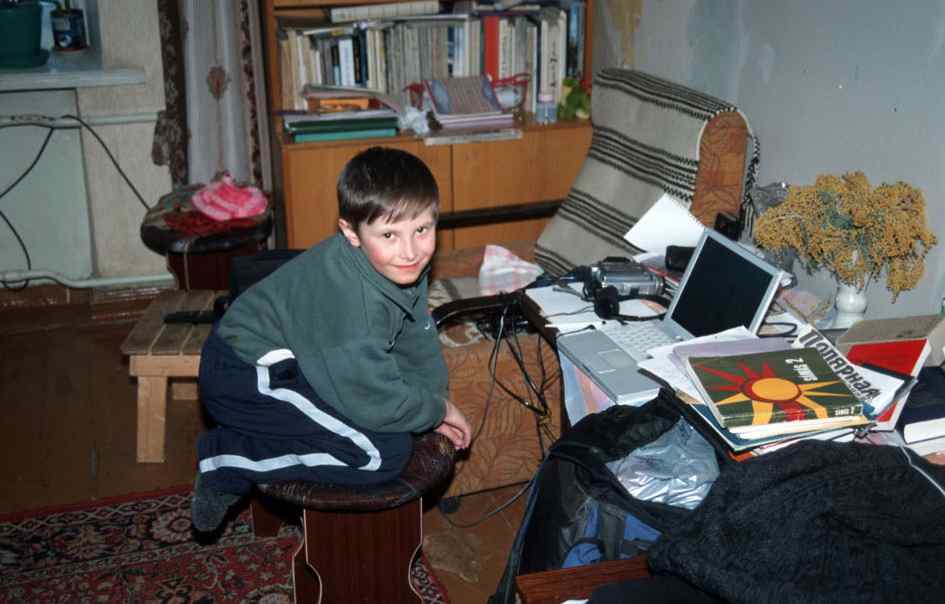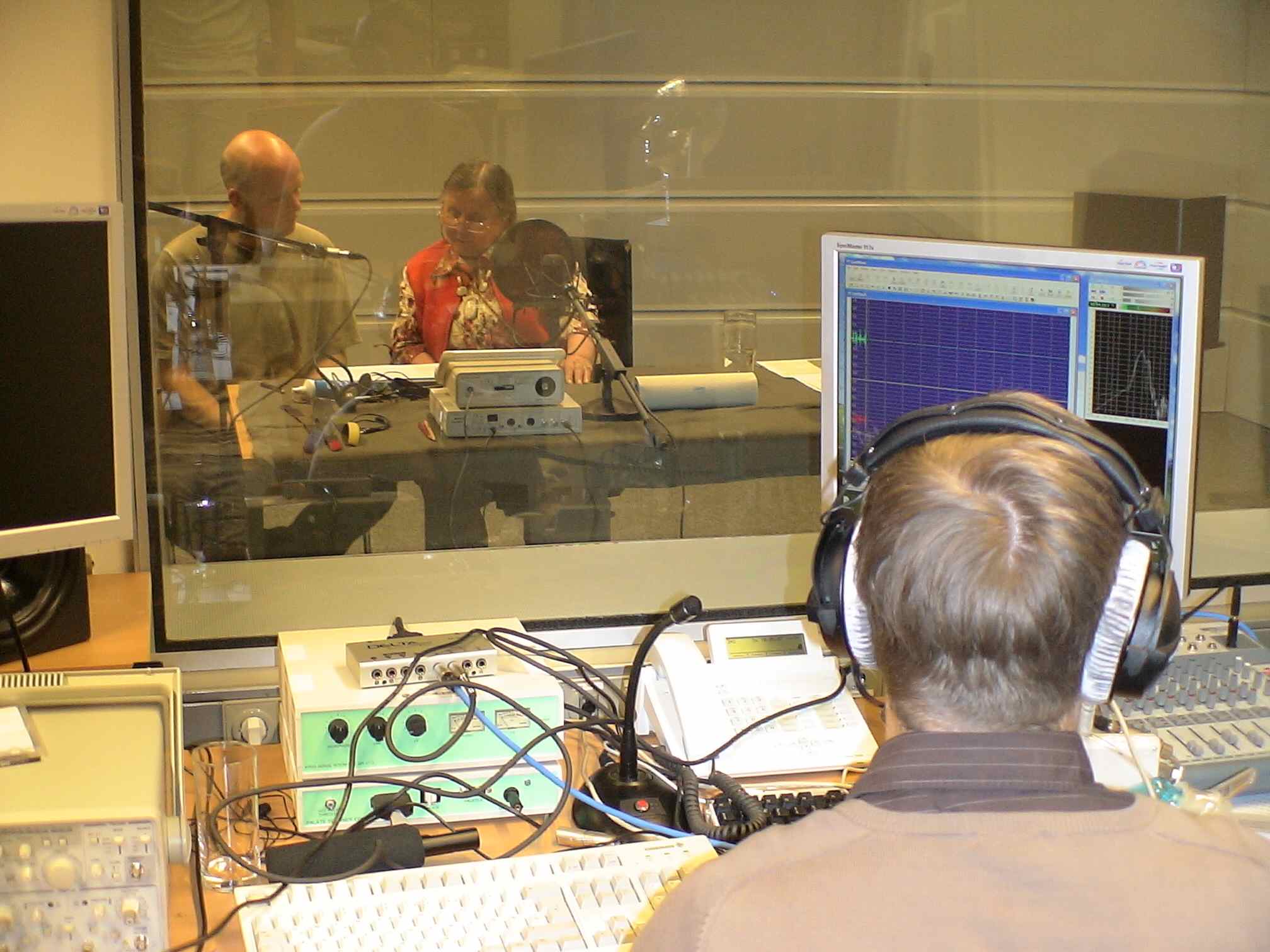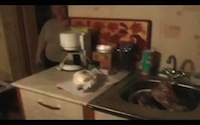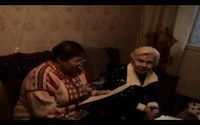
Efim Galkin looking over the fieldworkers stuff (Murmansk; March 2004, Foto: Michael Rießler)
The project was carried out between 2005 and 2010 with the aim of providing linguistic and
language sociological documentation of the endangered Kola Sámi languages and building a digital multimedia archive as the basis for future applied and theoretical research for and on Kola Sámi.
For more information and access to the archive contact:
- Michael Rießler (University of Freiburg)
Two follow-up projects are currently ongoing:
- A PhD project on Kola Sámi language sociology, carried out at the University of Tromsø by Elisabeth Scheller
- A habilitation project aiming at a descriptive grammar for Kildin and Ter Sámi, carried out at the University of Freiburg by Michael Rießler.

Nina Afanasyeva and Joshua Wilbur (from right) during elicitation at the MPI-EVA phonetics lab (Leipzig); in front Sven Grawunder (May 2007, Foto: Michael Rießler)

Svetlana Danilova, Michael Rießler and Nina Sharshina (from left) working with annotations at the field office in Lovozero (April 2008, Foto: Elena Karvovskaya)
Only a minor part of the approximately 1800 Kola Sámi in Russia speak and understand their mother tongue fluently today. Most of them are elder speakers. The middle generation has either a very limited knowledge of the Sámi, or does not know the language at all. There is almost no member of the younger generation who actively uses Sámi. The absence of a language environment in which the language is spoken by everyone all the time as well as a lack of social motivation for language use pose a threat to the survival of the languages. Taking into account the age of the active speakers, the end of the Sámi speech communities in Russia is probably not far away.
| Languages | Countries | Speakers | Degree of endangerment | |
|---|---|---|---|---|
| Western Sámi | South | Norway, Sweden | 300-500 | seriously endangered |
| Ume | Sweden | < 20 | nearly extinct | |
| Pite | Sweden | < 30 | nearly extinct | |
| Lule | Norway, Sweden | 1 000-3 000 | seriously endangered | |
| North | Norway, Sweden, Finland | 30 000-50 000 | endangered | |
| Eastern Sámi | Inari | Finland | 300-500 | seriously endangered |
| Kemi | Finland, Russia | ✝ | extinct (19th century) | |
| Skolt | Finland, Norway, Russia | < 700 | seriously endangered | |
| Kildin | Russia | < 700 | seriously endangered | |
| Ter | Russia | < 15 | nearly extinct | |
| Akkala | Russia | < 5 | nearly extinct | |
| The Sámi languages: number of speakers and degree of endangerment. Sources: Hasselblatt & Blokland (2003), Salminen (1993), Sammallahti (1998), own estimates (for Kola Sámi). | ||||
Recording language practices in the social lives and social interactions of Kola Sámi speakers of different generations was the main objective of the project. Language data were recorded during various field trips to the Kola Peninsula. We worked with Kildin speakers in both rural and urban environments. The principal methods used were extensive interviews, group discussions and speaking with local experts. In addition, we recorded speakers in natural situations.
Although comprehensive linguistic documentation focussed on the most vital language Kildin Sámi, our documentation includes recordings with several native-speakers of the much smaller Kola Sámi languages Akkala and Ter Sámi as well as with Skolt Sámi speakers from Russia in order to produce as complete a survey as possible.





